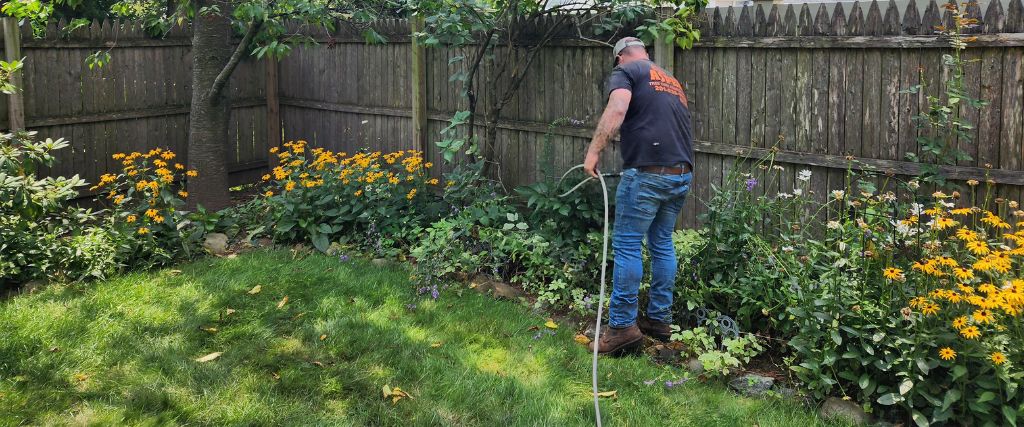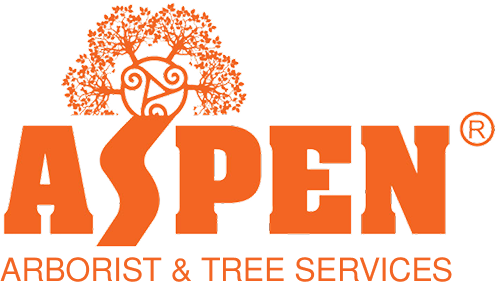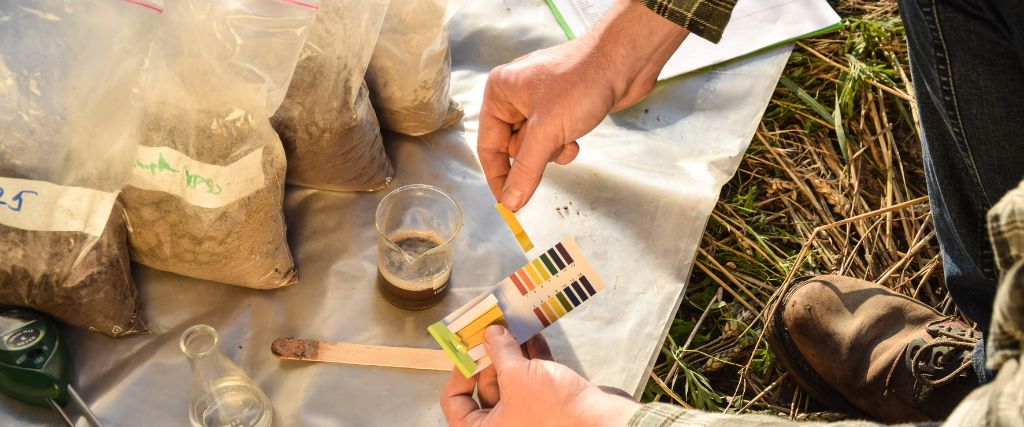While you enjoy the lush greenery of New Jersey’s forests, the true story lies beneath your feet. Soil, often overlooked, is the lifeblood of these majestic trees.
This article highlights the importance of soil sampling and soil testing in maintaining tree health. From identifying nutrient deficiencies to managing soil pH and dealing with soil compaction, we’ll guide you through the essential steps of soil testing.
Get ready to dive under the ground’s surface and discover how you can help prevent tree diseases and promote attractive growth.
In This Article
- What soil testing is and how it differs from soil analysis
- Why regular soil sampling in your northern New Jersey yard is a huge benefit – for you and your plants
- What a soil sample analysis tells you and what to do with the results
- How to recognize the common soil problems in northern New Jersey that affect your trees and shrubs
- Why healthy soil is vital for the health and longevity of your trees
The Basics of Soil Testing
The soil in your New Jersey yard is more than just dirt; it’s a complex ecosystem brimming with life and nutrients essential for healthy tree growth. Knowing what’s in it can make a world of difference for your trees.
Soil testing is a fundamental step in assessing the health of your trees. It’s like a health check-up for the ground where your trees plant their roots. Without it, you’re essentially blind to what’s beneath the surface and are unable to address the common soil problems in northern New Jersey that can harm your trees.
What does a soil test measure?
A soil test measures various parameters that are essential for understanding the soil’s fertility and health. These measurements typically include:
- Nutrient content: Soil tests report on the content of primary nutrients such as nitrogen (N), phosphorus (P), and potassium (K), as well as secondary nutrients like calcium (Ca), sulfur (S), and magnesium (Mg).
- pH level: Soil pH is a measure of the acidity or alkalinity of the soil, which is crucial for understanding nutrient availability and its impact on plant growth.
- Organic matter: The test measures the amount of organic matter in the soil, which is important for soil health and fertility.
- Cation exchange capacity (CEC): CEC is a measure of the soil’s ability to hold and exchange cations (positively charged ions), which is important for nutrient retention and availability.
- Other physical and chemical properties: This may include measurements related to soil structure, salinity, electrical conductivity, and the presence of other essential and non-essential nutrients.
By examining the nutrients and other substances in the ground, it’s possible to identify any deficiencies that might be affecting the vitality of your trees and shrubs. This information is important for making informed decisions about fertilizer and other soil applications, understanding soil health, and optimizing plant health while minimizing environmental impact.
It’s not just about nutrients, though. Soil testing can also reveal the presence of heavy metals or other toxins that could impact tree health. If you’re seeing poor growth or disease in your trees, the problem might be lurking in the soil.
So, don’t underestimate the power of a good soil test. It’s the key to unlocking the secrets of your soil and keeping your trees healthy. It’s one of those things that might seem like a hassle, but trust me, it’s worth it. Without it, you’re just guessing and that’s no way to ensure the best for your trees.
DID YOU KNOW? Soil is not an inert substance – it’s a living resource teaming with billions of bacteria, fungi, and other microbes that make up a symbiotic ecosystem upon which plants depend.
What’s the difference between soil testing and soil analysis?
A soil test is a traditional analysis of soil chemistry, providing a snapshot of the soil’s macro and micronutrient levels, pH value, and other essential parameters. It offers this-season recommendations for optimizing plant health and is primarily prescriptive.
On the other hand, soil analysis is a broader term that encompasses not only the chemical properties of your soil, but also its physical and biological condition. It is used to manage the soil and develop effective nutrient management plans. Unlike a soil test, which is more prescriptive, soil analysis is fundamental to many management decisions and enables the planning of cultivation and soil management actions.
In a nutshell:
- A soil test focuses on specific chemical parameters used to provide immediate recommendations to improve tree and shrub health.
- A soil analysis provides a more comprehensive understanding of the soil’s chemical, physical, and biological status, aiding in long-term soil and plant health management decisions.
How do I know if I should test the soil on my property?
We recommend regular soil sampling as part of any property maintenance program. However, if you’re not doing it on a regular schedule or haven’t done a soil test in a while, look for these telltale signs of poor soil health that indicate it’s time to send a soil sample to a soil testing lab.
Look for These Signs of Poor Soil Health
- Soil Erosion: Visible soil erosion, especially after heavy rainfall, can indicate poor soil health. Erosion washes away valuable topsoil, nutrients, and organic matter, affecting plant growth and ecosystem stability.
- Compacted Soil: Soil compaction, characterized by hard or compressed soil, restricts root growth and reduces water infiltration. Compacted soil can lead to poor drainage, hinder nutrient uptake, and negatively impact the health of your trees and shrubs.
- Signs of Nutrient Deficiency: Nutrient deficiencies affect plant growth and overall vitality and are often a sign of poor soil. For example, yellowing leaves can suggest a lack of nitrogen, while a reddish-purple hue might point to a phosphorus deficiency. Stunted growth or smaller than normal leaves might mean there’s not enough potassium.
- pH Imbalance: Soil pH plays an important role in nutrient availability for plants. Extreme pH levels (too acidic or too alkaline) can hinder nutrient uptake and affect plant growth. If not managed correctly, an improper pH level can stunt tree growth and lead to nutrient deficiencies. To ensure your trees are growing in an environment that suits them best, regularly test soil pH so you can identify and quickly address pH-related issues.
- Weed Infestation: Weeds thriving in your garden can be a sign of poor soil health. Weeds often indicate disturbed or unhealthy soil conditions that favor their growth over desired plants.
- Waterlogged Soil: If you notice areas with excess water accumulation it usually means the soil has poor drainage and there likely are soil structure issues. Waterlogged soil deprives roots of oxygen, leading to root rot and poor tree health.

The tree health technicians from Aspen Tree apply tree fertilization treatments based on the results of a soil test to ensure each tree receives exactly what it needs.
How will soil sampling test results help me?
While a soil test provides valuable information about the nutrient content, pH, and other properties of the soil, it’s what you do with the information that makes the real difference. Visual indicators of probable soil problems are only a starting point; soil analysis provides the additional information needed to fully understand the condition of your soil and take decisive action.
Benefits of Soil Samples
Here are four of the most common benefits of using soil sample data to guide your tree and shrub care decisions:
- Optimizing tree and shrub health: Soil test results help determine the specific fertilizer, the correct amount to apply, and other requirements for different plants, thus optimizing their growth and yield. Over-fertilizing can harm your trees more than help.
- Environmental protection: By identifying the soil’s nutrient levels, soil tests can help prevent the over-application of fertilizers, which can lead to environmental contamination through runoff and leaching.
- Diagnosing plant problems: In many cases of “DIY tree health diagnosis gone wrong” it’s the underlying issues, such as nutrient deficiencies, pH, and soil compaction, that lead to an incorrect diagnosis of tree health problems.
- Cost savings: By providing tailored recommendations, soil tests help homeowners and property managers save money by avoiding the unnecessary use of fertilizers and other amendments.
In summary, soil testing is important for informed and sustainable land use, efficient plant diagnosis and treatment, and environmental stewardship.
How often should you get a soil analysis?
Regular soil testing helps identify any nutrient deficiencies or excesses, as well as the presence of harmful pathogens.
You should get a soil test at least once every three years. This frequency can help you monitor changes in soil fertility and make informed decisions about nutrient management.
However, if you are actively amending your soil or have a problem area, you may want to test more frequently, such as annually.
We also recommended testing whenever there is a major change in the landscape plants you’re growing or if you notice tree health problems during the growing season.
What time of year is best for soil sampling?
Soil sampling can be done at any time but we recommend doing it in early spring or in the fall, with fall soil testing allowing for results to be ready in time for the next growing season. Soil testing can provide guidance on pH levels, nutrient content, and recommendations for lime and fertilizer applications, which can save money and prevent environmental issues related to over-fertilization.
Healthy Soil Leads to Healthy Trees
Don’t wait until your trees show signs of stress. By regularly sampling and testing your soil, you’re not just ensuring the health of your trees today, but you’re also investing in their longevity and vitality for years to come.
If you’d like to ensure your trees, shrubs, and landscape plants are set up to thrive, call the experienced, local arborists at Aspen Tree at (201) 939-8733 to schedule a property inspection, perform soil testing, and provide you with a thorough soil analysis and recommendations. Your trees will thank you!






